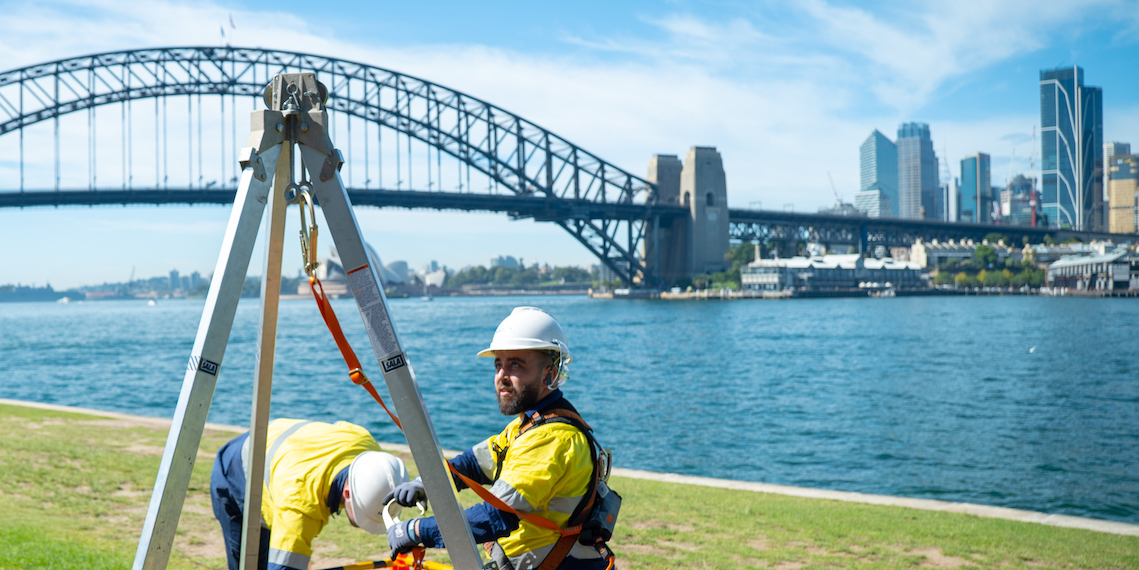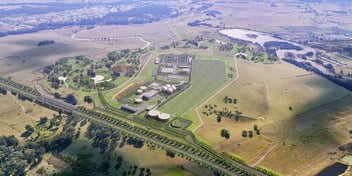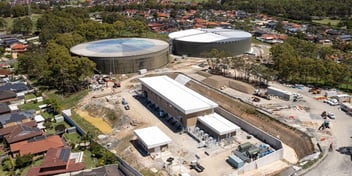IoT project set to transform Sydney’s wastewater monitoring efforts

An innovative Internet of Things (IoT) wastewater monitoring project now underway in Sydney will install 26,000 data loggers across 4600 kilometers of wastewater infrastructure.
The biggest project of its kind in Australia, it will help reduce maintenance costs, protect waterways and produce valuable digitisation insights.
Sydney Water has already installed 9000 devices across the network areas responsible for 70% of overflows to Sydney’s iconic waterways, with the remainder to be installed by June 2024.
So far, 400 blockages at environmentally high-risk sites have been identified and cleared, and Sydney Water has saved around $400,000 a month in avoidance costs.
Sydney Water Head of Operational Technology Craig Earl said the IoT wastewater monitoring project is transformational for Sydney Water, with the utility positioning itself as a leader in IoT application within the water context.
“We’re leading the industry on some of this new deployment, which is resulting in substantial savings via early detection of blockages in our wastewater network,” he said.
Installed on existing wastewater infrastructure, the sensors send frequent data readings back to Sydney Water’s operational centre. The readings are pre-configured to trigger an alarm when certain thresholds are met, indicating a potential blockage.
As the system detects blockages in wastewater pipes before they lead to wastewater discharge into customer properties and the environment, incidents can be avoided that could pose a public health risk and incur massive clean-up costs and result in reputation damage.
Earl said the data loggers allow a rapid response from the Sydney Water team, resulting in more efficient and effective management of assets.
“We've taken a staged approach throughout our deployment program. We are at stage three now, but from early iterations in stages one and two, we’ve been able to test the maturity of the devices and of our processes,” he said.
“This includes site selection and identifying the critical assets that are going to give us the best environmental impact from the location of our devices through those early stages. We are now at the stage of moving into an escalated roll out through to the middle of 2024.”
Environmental stewardship
Earl said the IoT wastewater monitoring project is set to provide multiple benefits to the utility and the community, but that environmental protection is one of the key objectives of the $15 million program.
“It’s all about improving our environmental footprint and minimising the impact of our wastewater system on the environment,” he said.
“We have identified about 4600 kilometers worth of wastewater pipes, particularly around Sydney’s unique waterways – including the harbour and river systems. And if there were a blockage in those wastewater pipes, spillage may go to a sensitive bushland or waterway.
Sydney Water is targeting these areas to get the biggest benefit in the event of a spillage, and Earl said the process is also helping the utility gain proactive insight into what is happening within its wastewater system.
“Our focus here with this use case of IoT technology in wastewater is key to the deliverable of providing a safe city. We want to ensure that environmentally we are doing everything we can to protect our waterways,” he said.
Digital transformation
Earl said that, while most water utilities have a wastewater network monitoring program in place, Sydney Water’s project is using IoT devices to progress towards much more comprehensive and digitally connected monitoring practices.
“Every water utility does some form of monitoring and control across their wastewater systems. But the key element of our IoT technology application is a purposeful shift away from high-cost, low-volume monitoring, towards more low-cost, high-volume monitoring,” he said.
“From our knowledge, this project is certainly the largest of its kind nationally, and potentially globally. We recognise that we are leading edge in this regard.”
Earl said the project also feeds into Sydney Water’s high-level digital transformation strategy.
“We want to be on the edge, particularly with opportunities for growth in the western corridor. We want to ensure we have a future focus on any new greenfield developments, as well,” he said.
“And this IoT wastewater monitoring project is going to provide a lot of learnings that we can take into other areas of our work across greater Sydney. We can also look into the way we use data analytics to drive decision making around smart metering on potable water for residences and better outcomes for customers, as well.
“So, while the Iot wastewater monitoring project is already providing immediate savings and benefits, it’s going to inform our digital transformation, too. The learnings will be transferable.”
Safer, faster, better
Earl said another key benefit of using the IoT network data loggers to keep an eye on the wastewater network is the significant reduction of safety risks.
“More traditional technologies would generally involve an employee conducting a confined-space entry into the sewer access chamber. There is a higher risk when you have employees going into those live sewer environments and, with any confined-space entry, there are a lot of safety controls that we need to put into place,” he said.
“We wanted to make sure any installation we did with IoT eliminated that confined-space entry risk. Our employees can simply lean in and install the device at the top of the access chamber.
“Not only does that save time – we can complete an installation in 20 minutes – but it saves the safety and setup risks, and the time taken to do atmospheric testing, provide additional safety equipment, and the recording that we normally do in more traditional monitoring scenarios.”
Boasting a five-year battery life, the data loggers are designed to withstand high humidity and water immersion, significantly reducing the need for regular maintenance visits.
“Key to the success and return on investment was to ensure we had a durable device that can sustain environments within access chambers, which can have quite corrosive atmospheres,” Earl said.
“We have done a lot of extensive testing with our partners to ensure that the battery can sustain that lifecycle, and a lot of the return on investment has been built on that requirement, which informed our partner selection process.
“And, once that lid is closed, we don’t have to go back to that site for a number of years. We are monitoring remotely now.”
While the installation of devices is still under way, Earl said the project is already paying off and showcases the Sydney Water team’s dedication to finding new and innovative ways of servicing the community and caring for the environment.
“There has been real energy within Sydney Water’s teams, in wanting to improve the customer’s environmental experience. This project really came about due to the organisation challenging itself to look at a different approach to monitoring,” he said.
“Sydney Water has dedicated teams who have drive and passion to create better ways of doing things for the city, and driving innovation in this space is a reflection of the great attitude of the team.”


